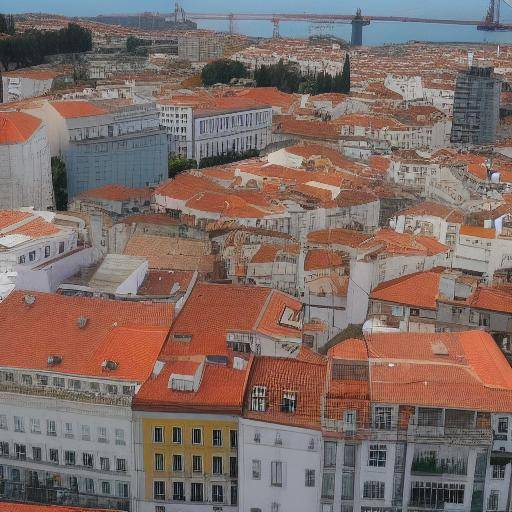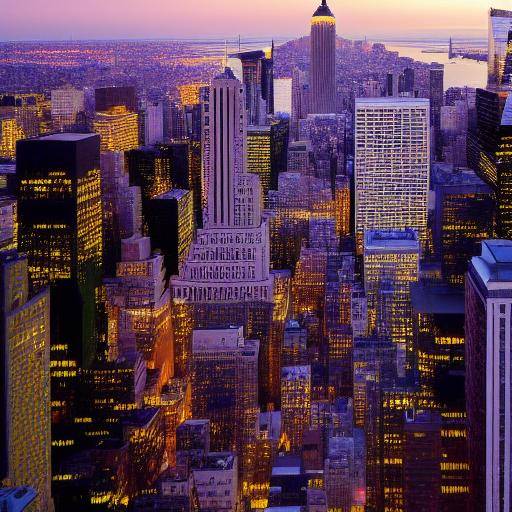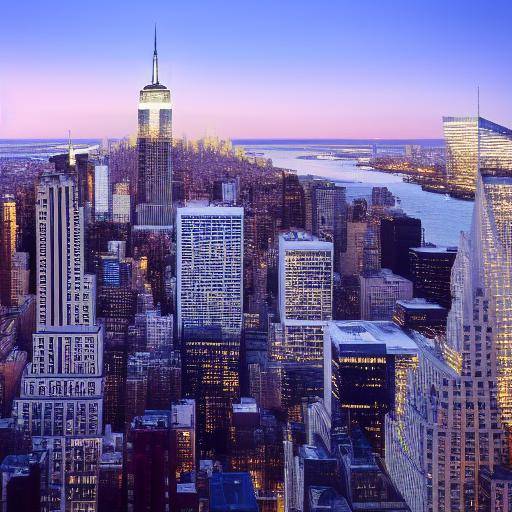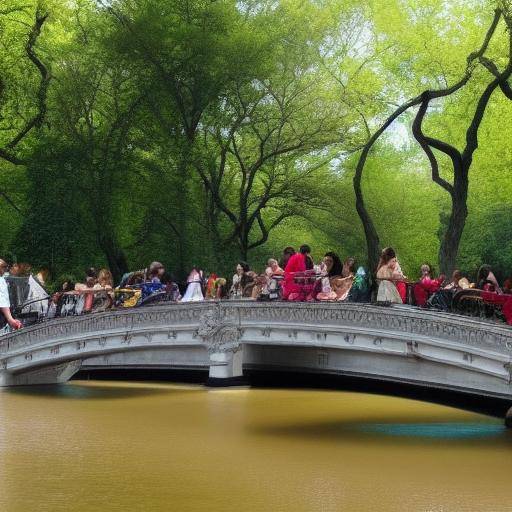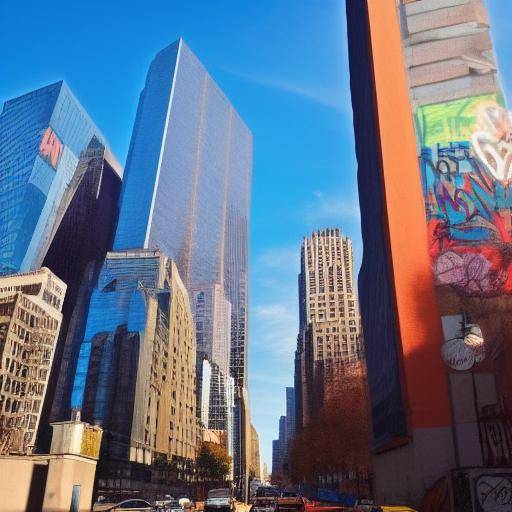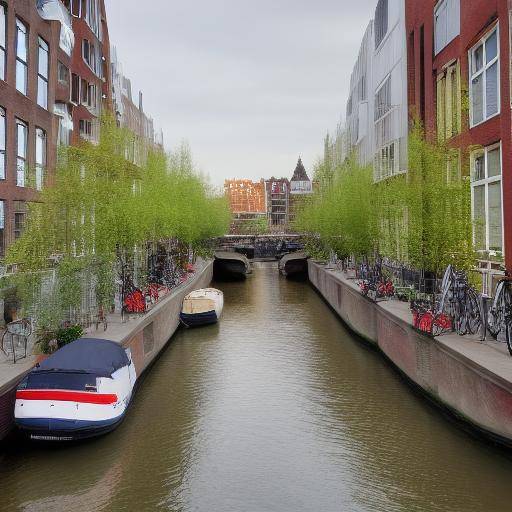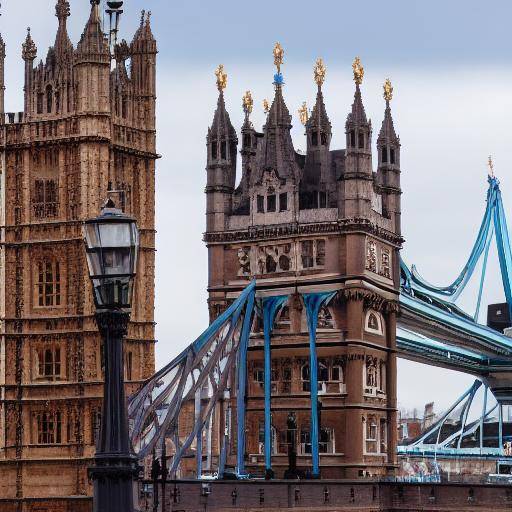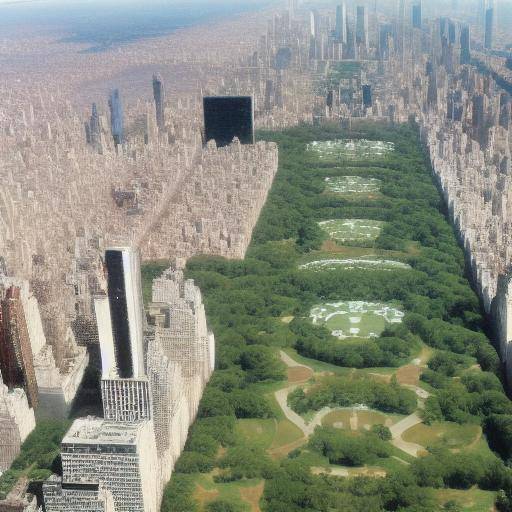
Welcome to the majestic city of New York! With its amazing urban architecture and contemporary design, New York is the perfect stage to explore the evolution of architecture throughout history. From its iconic skyscrapers to its iconic bridges and historic districts, the New York architecture is a reflection of the greatness and cultural diversity of this city. In this article, we will immerse ourselves in the fascinating world of New York architecture, exploring its history, in-depth analysis, practical advice, and reflections on future trends. Join us on this journey to discover the architectural grandeur of New York.
Introduction
The Greatness of New York
New York, known as the Great Apple, is one of the most iconic and vibrant cities in the world. Its amazing urban architecture serves as testimony to its incredible history, its role as a global financial centre, and its cultural diversity.
Overview of Article
In this article, we will explore the rich history of New York architecture, from its humble origins to its current position as an epicenter of contemporary design. We will enter the evolution of urban architecture, analyze current trends, provide practical advice, and reflect on the future of architecture in the Great Apple.
History and Background
The history of New York architecture is a fascinating narrative that spans centuries of development, innovation and adaptation. From the arrival of the first colonizers to the bustling metropolis we know today, New York has experienced extraordinary architectural evolution.
Origins and Evolution
The architectural panorama of New York began to take shape with the arrival of the European colonizers in the seventeenth century. The colonial and federal buildings dominated the urban landscape, reflecting the architectural influences of the time. Over time, the city experienced explosive growth, leading to the emergence of innovative architectural designs that would redefine the city's horizon.
Significant Milestones and Developments
The 19th and 20th centuries marked an era of expansion and architectural progress in New York. The rise of the Beaux-Arts movement led to the creation of majestic public and commercial buildings, such as the New York Public Library and the Grand Central Terminal. In addition, the construction of emblematic skyscrapers, such as the Empire State Building and the Chrysler Building, noted the beginning of a new era in urban architecture.
Anecdotes and Case Studies
We will highlight anecdotes and case studies that illustrate the historical importance of New York architecture. From the iconic Brooklyn bridge to the architectural rebirth of Lower Manhattan, we will explore the moments and places that have left an indelible mark in the history of the city.
In-depth Analysis
Current Trends and Challenges
New York's contemporary urban architecture is constantly evolving, facing challenges and taking advantage of unique opportunities in the twenty-first century. Sustainability, revitalization of urban spaces and the integration of innovative technologies are key aspects that define the city's architectural present.
Sustainability and Ecological Design
In response to the growing concern for the environment, sustainability has become a fundamental pillar of architectural design in New York. Architects and urbanists are working on the creation of environmentally responsible buildings, incorporating energy efficiency strategies, sustainable materials and waste management systems.
Innovation and Technology
New York is an incubator for innovation and technology in architectural design. From the 3D printing of structures to the implementation of intelligent building management systems, the city is adopting technological advances to create more efficient and connected urban environments.
Challenges and Opportunities
Challenges linked to urban growth and densification demand creative solutions. Through sustainable urban development plans and the revitalization of degraded areas, New York is proactively addressing the challenges associated with rapid growth and demand for living spaces.
Comprehensive review
Practices and Best Practices
We will highlight concrete examples of practical applications in contemporary New York architecture. From historic building renovations to sustainable neighborhood planning, we will explore the best practices that are shaping the city's architectural environment.
Opinions of Experts and Future Perspectives
We will interview renowned architects, urbanists and design leaders to gain valuable insights into the future of architecture in New York. Their views will illuminate the challenges, trends and opportunities that are emerging on the horizon of urban architecture.
Comparative analysis
New York vs. Other Metropolis
We will compare the New York architecture with that of other major cities in the world, exploring similarities and differences in architectural approaches, urban challenges and innovative solutions.
Potential synergies
We will identify areas where New York can learn from other cities and exchange knowledge to enrich its architectural approach. This analysis will provide valuable insights on how the city can improve its built environment.
Practical Tips and Accessible Advice
Strategies for Future Architects
We will offer practical advice for those who wish to enter the world of New York architecture. From education and professional development to job market opportunities, we will provide guidance for those who seek to leave their mark on the architectural scene of New York.
How to Appreciate the Neoyorquina Architecture
We will give valuable advice to architecture lovers on how to explore and appreciate the vast architectural heritage of New York. We recommend routes, tours and resources that will allow you to immerse yourself in the architectural wealth of the city.
Conclusion
Synthesis and Final Reflections
We will summarize the highlights of our exploration of New York architecture and present final reflections on the historical importance, the current evolution and the promising future of architecture in the Great Apple.
FAQs
Frequently Asked Questions about Neoyorquina Architecture
1. What are the most emblematic skyscrapers in New York?
New York's iconic skyscrapers include the Empire State Building, the One World Trade Center and the Chrysler Building, among others.
2. How has immigration influenced New York architecture?
Immigration has enriched New York's architecture by introducing styles, techniques and materials from different cultures to the city's architectural panorama.
3. What historic events have shaped New York's architectural horizon?
Events such as the Great Depression, the Harlem Rebirth, and the September 11 attack have left a profound mark on New York's architecture.
4. What historic districts are impermissible for architecture lovers in New York?
Districts such as Greenwich Village, SoHo, and the Financial District host an architectural wealth that reflects the history and cultural diversity of the city.
5. How is New York approaching sustainability in urban architecture?
New York is implementing sustainable measures, such as the development of green buildings, the expansion of green spaces and the promotion of public transport, to promote sustainability in its urban architecture.
6. What are the emerging trends in New York's contemporary design?
Emerging trends include the approach to accessibility, revitalization of underutilized urban spaces and design focused on local communities.
We hope that this article has enriched your understanding of New York architecture and its influence on contemporary design! New York remains a beacon of architectural innovation and excellence, and we hope that this tour has inspired you to explore further the extraordinary architecture of this city.


